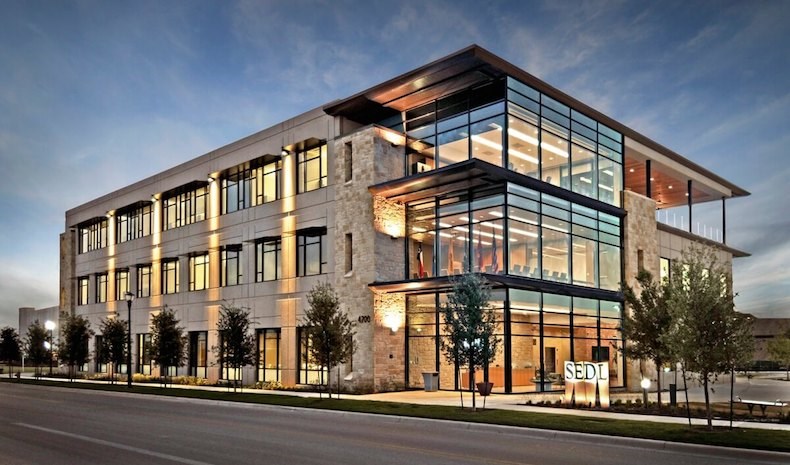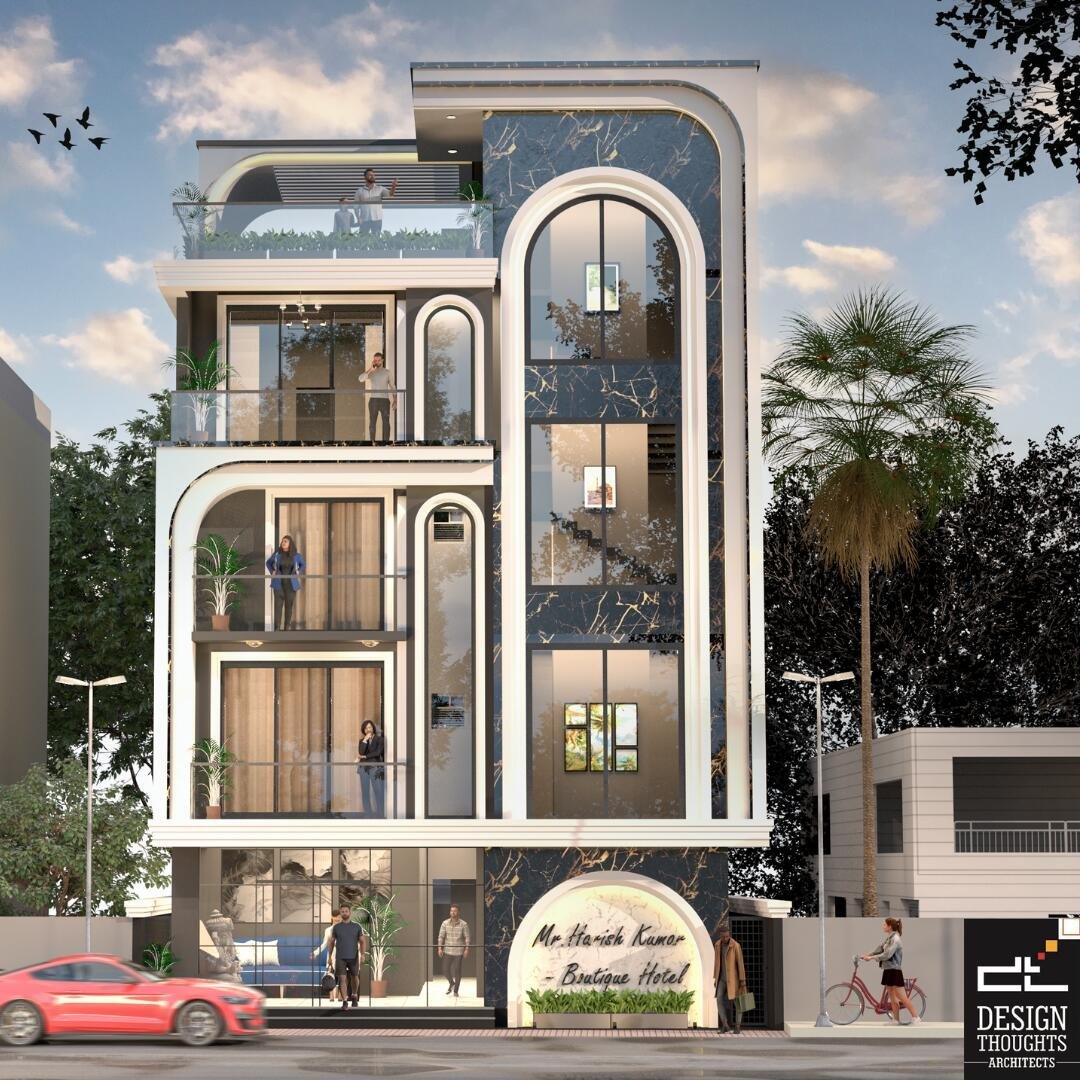Just How Commercial Architects Can Transform Your Service Area With Specialist Design Providers
Commercial architects play an important function in reshaping service environments. Their know-how in layout can considerably improve both functionality and appearances. By developing rooms that show a brand name's identity, they enhance functional effectiveness and staff member fulfillment. The effect of their job expands beyond mere look. Understanding the nuances of cooperation and sustainability can result in transformative outcomes. What specific aspects make these changes effective?
Comprehending the Duty of Commercial Architects
Commercial architects play an important function fit company settings that are both practical and aesthetically pleasing. They concentrate on making spaces customized to the details demands of businesses, ensuring that every square foot is used effectively. These specialists incorporate components such as spatial layout, lights, and products to enhance productivity and employee wellness. By teaming up with customers, commercial architects gather insights right into functional demands and brand identity, translating these into ingenious designs.Additionally, they navigate intricate building regulations and zoning regulations, ensuring conformity while taking full advantage of style capacity. Their competence includes sustainability practices, promoting energy effectiveness and eco-friendly materials in their jobs. Through their imaginative vision and technological knowledge, industrial architects not only develop attractive areas however also foster environments that promote cooperation and growth. Inevitably, their contributions substantially impact the overall success and photo of a business.
Benefits of Professional Style Services

Tailoring Areas to Your Brand Identification
Tailoring areas to a brand's identity is necessary for conveying its core values and mission. Commercial architects play an essential function in improving a service's visual identification with thoughtful design choices. By lining up building aspects with brand name concepts, companies can develop environments that resonate with customers and employees alike.
Reflecting Brand Values
Exactly how can a well-designed room embody a company's core worths? Commercial architects play an important function in forming environments that resonate with a brand name's identity. By integrating elements such as color pattern, materials, and formats, they develop spaces that mirror the significance of the company. A technology firm may choose for open formats and modern home furnishings to convey development and partnership, while a luxury brand name may choose elegant finishes and intimate rooms to stimulate exclusivity and refinement. Thoughtful style not only boosts capability yet additionally fosters a strong link between employees, customers, and the brand name. Eventually, a well-crafted setting functions as a substantial representation of a company's mission and vision, reinforcing its worths at every touchpoint.
Enhancing Aesthetic Identity
What elements can efficiently elevate a brand name's visual identification within a business space? Commercial architects play a critical function in integrating design features that resonate with a company's principles. Color pattern, typography, and materials can be tactically selected to mirror brand name worths while ensuring aesthetic allure. Additionally, integrating logo designs and brand images right into the architecture can create a cohesive visual story. Illumination design can additionally improve the ambience, leading consumer understandings and experiences (commercial architects). Layout and furniture selections need to align with the brand name's individuality, whether it's modern-day, standard, or cutting-edge. Eventually, a well-designed commercial space not just attracts clients but additionally enhances brand acknowledgment, producing a lasting impact that cultivates loyalty and interaction
Enhancing Functionality and Performance
Enhancing functionality and efficiency in industrial rooms entails maximizing area usage and designing workflows that enhance operations. Architects he has a good point concentrate on producing designs that reduce squandered space while helping with smooth changes between jobs. This approach not just improves productivity but likewise adds to a more natural workplace.
Optimizing Space Usage
Reliable space use is a vital consider business design, where the style needs to balance aesthetics with performance (commercial architects). Architects use various strategies to optimize readily available square video while ensuring that each location offers a distinct function. By evaluating process, website traffic patterns, and individual demands, architects can develop formats that boost both staff member performance and customer experience. Multi-functional spaces, flexible furniture setups, and enhanced storage space remedies are essential elements in achieving this objective. Furthermore, incorporating all-natural light and open areas promotes a much more welcoming ambience, further raising the utility of the atmosphere. Ultimately, reliable room utilization not just boosts functional effectiveness but likewise contributes positively to the general brand name image, making it an essential consideration in business design
Streamlined Process Style
How can a properly designed process change an industrial area right into a center of efficiency? Structured process design concentrates on enhancing the physical format and operational processes within a service environment. By tactically preparing workstations, meeting locations, and resources, architects can remove unnecessary movement and enhance partnership. This thoughtful design decreases interruptions and helps with interaction, allowing staff members to focus on their tasks more effectively. Additionally, integrating innovation into the operations can even more automate processes, lowering time spent on regular tasks. Therefore, services experience enhanced staff member spirits and raised output, producing a vibrant atmosphere that promotes development. Ultimately, purchasing structured operations design not only improves capability but also places an industrial area for sustainable growth and success.
Fostering Cooperation With Style
Although modern-day workspaces usually focus on individual efficiency, the layout of industrial spaces increasingly emphasizes partnership as a crucial chauffeur of technology and group communication. Architects play a vital duty in producing environments that foster communication among employees. Open designs, multifunctional areas, and strategically placed public areas motivate spontaneous discussions and conceptualizing click here now sessions.Incorporating components such as movable furniture and versatile meeting areas allows groups to reconfigure areas based upon their collaborative requirements. Furthermore, integrating technology, like interactive white boards and video clip conferencing tools, improves the capability to connect successfully, no matter location.Natural light and biophilic design aspects likewise add to a more inviting ambience, advertising comfort and well-being, which are important for effective team effort. By focusing on these aspects, commercial architects can develop vibrant atmospheres that not only enhance cooperation but also drive total organization success.
Lasting Style Practices in Commercial Style

Instance Researches: Effective Improvements by Commercial Architects
The implementation of sustainable layout techniques has not just improved the strategy to business architecture however has actually additionally resulted in remarkable makeovers in different organization rooms. One noteworthy case is the redesign of a tech company's headquarters, where architects incorporated all-natural light and eco-friendly walls, causing improved worker well-being and efficiency. This transformation lowered power costs by 30% and boosted the firm's public image.In an additional circumstances, a retailer undertook a complete overhaul, making use of reclaimed materials and energy-efficient systems. This not only attracted eco-conscious consumers however additionally boosted foot website traffic by 25%. A 3rd instance involved a business workplace that embraced an open-plan design with adaptable work spaces, cultivating cooperation amongst groups. The architects' concentrate on producing a vivid and adaptable environment significantly increased staff member complete satisfaction. These study exhibit exactly how business architects can produce impactful areas that line up with company objectives and sustainability initiatives.
Often Asked Questions
Just How Much Do Commercial Architecture Services Normally Price?
The price of industrial architecture services varies extensively, commonly varying from $100 to $250 per hour. Variables influencing websites pricing include task complexity, location, and the architect's experience, making it vital for businesses to acquire thorough price quotes.
What Sorts Of Organizations Profit A Lot Of From Commercial Architects?
Numerous services, consisting of retail, hospitality, and corporate workplaces, greatly take advantage of commercial architects. These professionals enhance capability, visual appeals, and brand name identity, guaranteeing spaces are optimized for customer engagement and staff member efficiency, eventually cultivating company growth.
How much time Does a Commercial Design Job Usually Take?
The timeline for an industrial layout task typically varies from several weeks to several months. Variables affecting duration include task intricacy, regulative authorizations, and collaboration amongst stakeholders, every one of which can affect total completion time.
Can I Employ a Commercial Engineer for Remodellings Just?
Yes, employing a business engineer for improvements is possible. Numerous architects specialize in restoration jobs, giving competence in optimizing existing areas while sticking to guidelines and improving capability, aesthetic appeals, and general worth of the company setting.
What Certifications Should I Seek in an Industrial Engineer?
